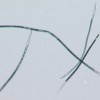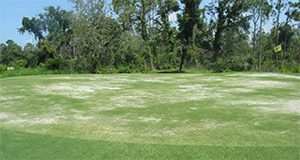Plant-parasitic nematodes are among the least understood and most difficult pests to manage on turfgrass in Florida. They are very small, and most can only be seen with the aid of a microscope. They use a stylet to puncture plant cells, to inject digestive juices into them, and to ingest plant fluids. The most reliable way to determine whether plant-parasitic nematodes are involved in a turf problem is to have a nematode assay conducted by a professional nematode diagnostic lab. This 6-page fact sheet was written by William T. Crow, and published by the UF Department of Entomology and Nematology.
http://edis.ifas.ufl.edu/ng039
Tag: Lawn Pest Nematodes
Sting Nematode Belonolaimus longicaudatus Rau (Nematoda: Tylenchida: Belonolaimidae)
 Among the most destructive plant-parasitic nematodes to a wide range of plants, Belonolaimus longicaudatus damages plant roots. When the plants cannot take up water and nutrients from the soil, they become stunted, wilt, and with severe infestation, die. Florida is considered to be the point-of-origin for Belonolaimus longicaudatus and therefore this nematode exhibits a great deal of diversity in morphology, host preference, and genetics in our region. This 6-page fact sheet was written by W. T. Crow, and published by the UF Department of Entomology and Nematology, March 2015. (Photo W. T. Crow, UF/IFAS)
Among the most destructive plant-parasitic nematodes to a wide range of plants, Belonolaimus longicaudatus damages plant roots. When the plants cannot take up water and nutrients from the soil, they become stunted, wilt, and with severe infestation, die. Florida is considered to be the point-of-origin for Belonolaimus longicaudatus and therefore this nematode exhibits a great deal of diversity in morphology, host preference, and genetics in our region. This 6-page fact sheet was written by W. T. Crow, and published by the UF Department of Entomology and Nematology, March 2015. (Photo W. T. Crow, UF/IFAS)
http://edis.ifas.ufl.edu/in1080
